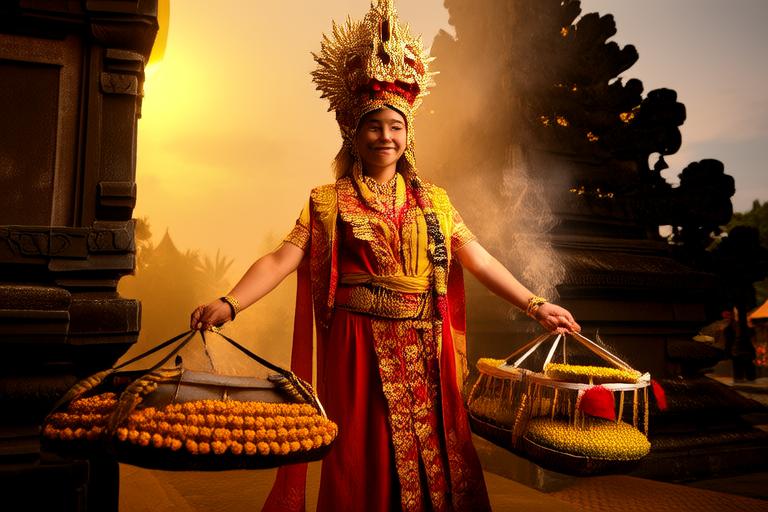Discovering Unique Cultural Customs: Stories Behind the Rituals

Discovering Unique Cultural Customs: Stories Behind the Rituals
Introduction
Cultural rituals are deeply ingrained practices that have been passed down through generations, serving as a vital link between communities and their past. These rituals play a crucial role in preserving traditions, connecting people to their roots, and offering insight into their way of life. They act as a living testament to the shared experiences, values, and beliefs that define a culture. By participating in these rituals, individuals reaffirm their identities, strengthen social bonds, and honor their ancestors. Moreover, these practices often encapsulate the collective wisdom and history of a community, ensuring that important lessons and stories are not lost over time.
Rituals Around the World
The Boryeong Mud Festival – South Korea
Every summer, the coastal town of Boryeong, located on the western coast of South Korea, transforms into a sea of mud for the annual Boryeong Mud Festival. This vibrant celebration, which began in 1998, draws hundreds of thousands of visitors who come to experience the unique and playful nature of the event. The festival takes place at the Daecheon Beach, where participants can engage in mud wrestling, mud slides, and even mud baths. The origins of the festival trace back to the local abundance of high-quality clay used in cosmetics production. The festival serves as a means to promote the region’s natural resources and attract tourism. Participants cover themselves in mud, believed to have therapeutic properties, while enjoying music, dance, and games. The mud itself is sourced from nearby quarries, providing a sustainable and locally-sourced element to the festival.
Day of the Dead – Mexico
The Day of the Dead, or Día de los Muertos, is a Mexican holiday celebrated on November 1st and 2nd. It is a time when families gather to remember and honor deceased loved ones. The festival has its roots in ancient Aztec and Mesoamerican cultures, where death was seen as a natural part of life. Families construct altars adorned with photos, candles, marigolds, and favorite foods of the departed. The purpose of the ritual is to assist the spirits of the dead on their journey back to the land of the living. Unique elements of the celebration include sugar skulls, pan de muerto (bread of the dead), and calaveras (skulls). The vibrant colors, decorations, and festivities are meant to celebrate life and death, rather than mourn the loss of loved ones. The Day of the Dead is a testament to the resilience and strength of Mexican culture, which has preserved its traditions despite centuries of colonialism and globalization.
Thaipusam – Malaysia
Thaipusam is an annual Hindu festival celebrated in Malaysia, particularly by Tamil communities. The festival falls in January or February, depending on the lunar calendar, and honors Lord Murugan, the son of Shiva and Parvati. Devotees carry kavadis, portable shrines decorated with flowers and religious symbols, through a series of challenging physical trials. The purpose of the ritual is to seek blessings, express devotion, and atone for sins. The most striking aspect of Thaipusam is the practice of body piercing, where devotees pierce their skin with hooks, skewers, and other sharp objects. This painful act is believed to demonstrate one’s dedication and commitment to the deity. The festival also includes processions, music, and fireworks, creating a colorful and lively atmosphere. Thaipusam is a significant event for the Tamil community in Malaysia, fostering a sense of unity and pride in their cultural heritage.
Cultural Significance
Rituals like those described above contribute immensely to the cultural identity of the communities involved. They serve as a bridge between the past and the present, helping to pass down knowledge and preserve heritage. These practices often play a central role in social cohesion, bringing people together and reinforcing shared values. However, in the face of modernization and globalization, many traditional rituals are under threat. Efforts to keep these customs alive include government support, community-led initiatives, and international recognition. UNESCO has designated several rituals as Intangible Cultural Heritage of Humanity, ensuring their protection and promotion. By embracing and celebrating these rituals, we can help ensure that they continue to thrive for future generations.
Conclusion
In conclusion, cultural rituals are a vital part of our global heritage, offering a window into the rich tapestry of customs and traditions that exist worldwide. Understanding and respecting these practices is essential for fostering mutual respect and appreciation among diverse cultures. We encourage readers to explore more about the unique rituals and customs that define different communities, and to recognize the value of cultural diversity. By doing so, we can work together to preserve and celebrate the shared human experience, ensuring that these precious traditions continue to thrive for generations to come.